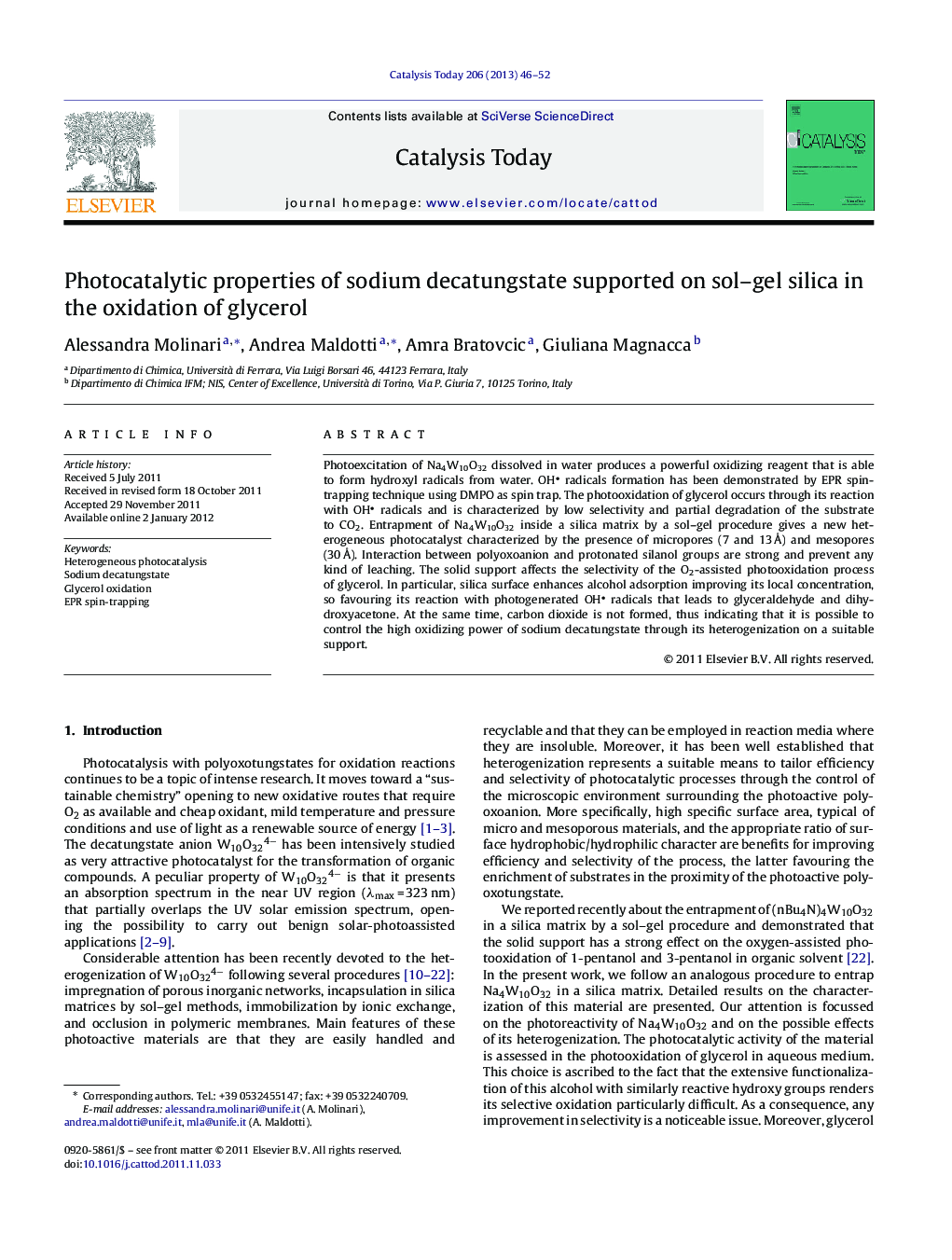| کد مقاله | کد نشریه | سال انتشار | مقاله انگلیسی | نسخه تمام متن |
|---|---|---|---|---|
| 54918 | 47031 | 2013 | 7 صفحه PDF | دانلود رایگان |

Photoexcitation of Na4W10O32 dissolved in water produces a powerful oxidizing reagent that is able to form hydroxyl radicals from water. OH radicals formation has been demonstrated by EPR spin-trapping technique using DMPO as spin trap. The photooxidation of glycerol occurs through its reaction with OH radicals and is characterized by low selectivity and partial degradation of the substrate to CO2. Entrapment of Na4W10O32 inside a silica matrix by a sol–gel procedure gives a new heterogeneous photocatalyst characterized by the presence of micropores (7 and 13 Å) and mesopores (30 Å). Interaction between polyoxoanion and protonated silanol groups are strong and prevent any kind of leaching. The solid support affects the selectivity of the O2-assisted photooxidation process of glycerol. In particular, silica surface enhances alcohol adsorption improving its local concentration, so favouring its reaction with photogenerated OH radicals that leads to glyceraldehyde and dihydroxyacetone. At the same time, carbon dioxide is not formed, thus indicating that it is possible to control the high oxidizing power of sodium decatungstate through its heterogenization on a suitable support.
Heterogenization on microporous silica controls the high oxidizing power of Na4W10O32, improves selectivity toward primary oxidation compounds and renders degradation to carbon dioxide negligible.Figure optionsDownload high-quality image (84 K)Download as PowerPoint slideHighlights
► Photoexcited Na4W10O32 reacts with water and produces hydroxyl radicals that are evidenced by EPR spin-trapping technique.
► The photooxidation of glycerol occurs through its reaction with OH radicals and is characterized by low selectivity and degradation to CO2.
► Entrapment of Na4W10O32 inside a silica matrix by a sol–gel procedure gives a heterogeneous photocatalyst with micro- and mesopores.
► Silica surface enhances alcohol adsorption improving its local concentration, so favouring its reaction with photogenerated OH radicals.
► Heterogenization on a suitable support increases selectivity to glyceraldehyde and dihydroxyacetone and prevents CO2 formation.
Journal: Catalysis Today - Volume 206, 1 May 2013, Pages 46–52